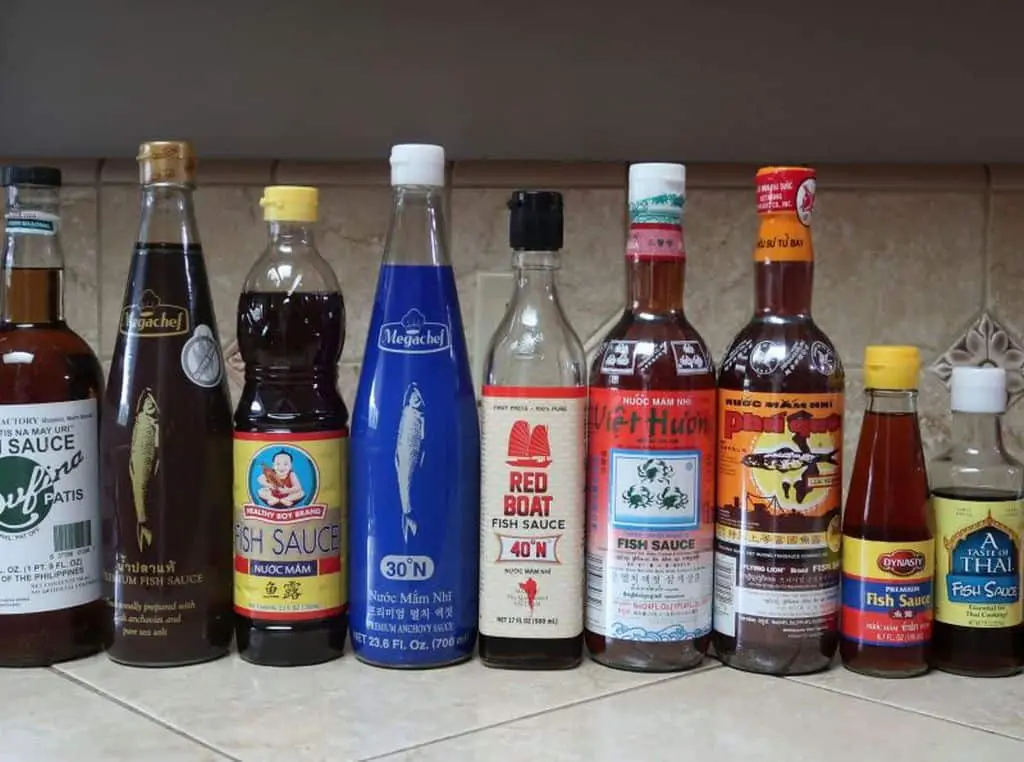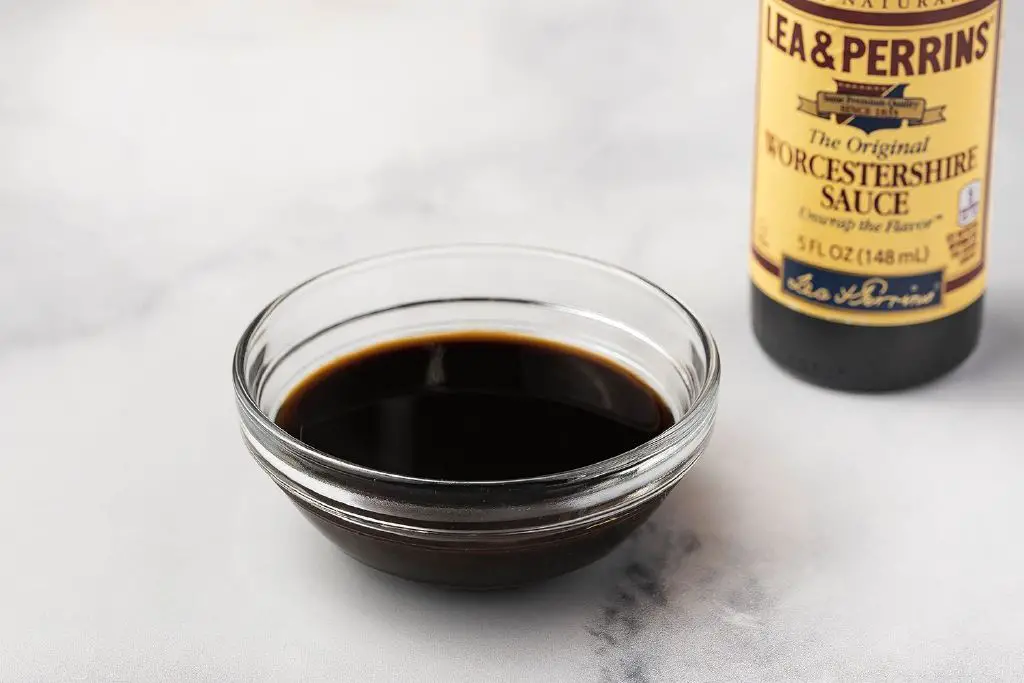Fish Sauce vs Worcestershire Sauce: What’s the Difference?

Are you ready to embark on a flavorful journey that will take your taste buds on a global adventure? Today, we dive into the intriguing world of condiments as we unravel the mysteries behind fish sauce and Worcestershire sauce.
These two culinary powerhouses hold the key to unlocking a whole new level of depth and complexity in your dishes. But what sets them apart?
Join us as we explore the origins, ingredients, and distinct flavor profiles that make fish sauce and Worcestershire sauce so unique. From the vibrant streets of Southeast Asia to the cozy kitchens of the United Kingdom, we’ll delve into the secrets behind these tantalizing sauces.
Get ready to uncover the secrets of umami, savor the aromas, and discover the culinary wonders that lie within each bottle. It’s time to answer the age-old question: Fish sauce vs. Worcestershire: what’s the difference?
Fish Sauce
Fish sauce is a staple ingredient in Southeast Asian cuisine, particularly in countries like Thailand, Vietnam, and Cambodia. It has been a product of salt-fermenting fish, typically anchovies, for centuries. The fish undergoes a fermentation process that can last for months, resulting in a pungent and savory liquid. The sauce is then strained, yielding a golden brown liquid that is highly aromatic and rich in umami flavor.
Fish sauce is known for its intense and distinct flavor profile. It adds depth, saltiness, and umami to dishes, making it a key ingredient in many Asian recipes. Its robust taste complements stir-fries, curries, marinades, and dipping sauces.
Despite fish sauce’s strong aroma, it adds a complex and well-rounded flavor to dishes when used in moderation. Take note that a little goes a long way, as using too much can overpower other flavors.
Worcestershire Sauce

Worcestershire sauce, on the other hand, hails from the United Kingdom. According to legend, John Wheeley Lea and William Henry Perrins, two chemists, developed the recipe in the early 19th century.
This sauce is made by fermenting a blend of ingredients, including vinegar, molasses, tamarind, onions, garlic, and various spices. The mixture is aged for several months before being strained and bottled.
Worcestershire sauce boasts a complex flavor profile that combines tanginess, sweetness, and a hint of umami. It is often described as having a slightly sour and fruity taste with savory undertones.
This versatile sauce is widely used in British and American cooking and is a key component in classics such as Bloody Mary cocktails, Caesar salads, and steak sauces. Worcestershire sauce’s unique blend of flavors adds depth and complexity to recipes, making it a beloved condiment in many households.
Differences between Fish Sauce and Worcestershire Sauce
Although fish sauce and Worcestershire sauce share some similarities in terms of enhancing flavor, they have distinct differences that set them apart. Let’s delve into these differences:
| Aspect | Fish Sauce | Worcestershire Sauce |
| Origin | Southeast Asia | United Kingdom |
| Key Ingredient | Fermented fish | Blend of ingredients including vinegar, molasses, and tamarind |
| Flavor Profile | Intense, pungent, salty, and umami | Tangy, slightly sour, sweet, and umami |
| Culinary Uses | Asian cuisine, marinades, dipping sauces | British and American cooking, cocktails, steak sauces |
| Aroma | Strong fishy aroma | Complex and aromatic |
| Color | Golden brown | Dark brown |
One of the significant differences between fish sauce and Worcestershire sauce lies in their origin and key ingredients. The process of fermenting fish yields fish sauce, which has a long history in Southeast Asian cuisine. Worcestershire sauce originates from the United Kingdom and is crafted using a blend of ingredients such as vinegar, molasses, and tamarind.
In terms of flavor, fish sauce delivers a powerful punch with its intense, pungent, salty, and umami-rich taste. Fish sauce is known for its distinct fishy aroma, which can be overpowering if used excessively.
On the other hand, Worcestershire sauce offers a more balanced flavor profile. It combines tanginess, slight sourness fish souce, sweetness, and umami notes, resulting in a complex and aromatic taste.
The appearance of these two sauces also differs. Fish sauce has a golden brown color, while Worcestershire sauce takes on a darker brown hue.
It’s worth noting that while fish sauce and Worcestershire sauce have distinct characteristics, they are not always interchangeable in recipes. Fish sauce brings a unique and specific flavor to Asian dishes, enhancing their authenticity.
Worcestershire sauce, with its balanced taste and wide-ranging culinary applications, adds a touch of complexity to Western-style recipes.
When using fish sauce, exercise caution due to its potent flavor. Start with small amounts and taste as you go, gradually adding more if needed. Worcestershire sauce, although less overpowering, should also be used judiciously, as its bold taste can dominate more delicate flavors if used excessively.
Culinary Uses
Fish sauce is widely used as a seasoning in Asian cooking. It adds a distinctive umami flavor to stir-fries, soups, dipping sauces, and marinades. Worcestershire sauce, on the other hand, is versatile and can be used in various cuisines. It enhances the taste of burgers, steaks, roasted vegetables, Bloody Mary cocktails, and more.
To give you a better understanding of the culinary uses, here are some popular dishes that highlight the use of each sauce:
Fish Sauce:
- Vietnamese Pho: Fish sauce is an essential ingredient in the broth, adding depth and complexity to the flavors.
- Thai Green Papaya Salad (Som Tum): The dressing for this refreshing salad often includes fish sauce, lime juice, and chili, creating a harmonious blend of flavors.
- Filipino Adobo: Fish sauce, known as “patis” in Filipino cuisine, is a key ingredient in the savory and tangy Adobo sauce.
- When it comes to culinary uses, fish sauce is commonly used in marinades, stir-fries, curries, and dipping sauces, where it imparts its signature depth and umami flavor.
Worcestershire Sauce:
- Beef Stew: Worcestershire sauce adds a savory and tangy element to the rich flavors of the stew.
- Caesar Salad: Worcestershire sauce is a crucial component of the classic Caesar salad dressing, contributing to its distinct umami taste.
- Bloody Mary Cocktail: Worcestershire sauce is an essential ingredient in this popular brunch cocktail, adding a savory kick to the tomato-based drink.
- Worcestershire sauce, on the other hand, finds its place in British and American cooking. It is a versatile condiment that adds complexity to dishes like steak sauces, gravies, soups, and even cocktails like Bloody Marys.
Vegan and Vegetarian Alternatives
For those following a vegan or vegetarian diet, there are alternatives available for both fish sauce and Worcestershire sauce:
- Vegan Fish Sauce: Vegan fish sauce is made using ingredients like seaweed, mushrooms, soy sauce, and other flavorings. It aims to replicate the umami taste of traditional fish sauce without using any animal products.
- Vegetarian Worcestershire Sauce: Several brands offer vegetarian versions of Worcestershire sauce that exclude the anchovies found in the traditional recipe. Instead, they utilize other ingredients to maintain the flavor profile.
Conclusion
In conclusion, fish sauce and Worcestershire sauce are two distinct condiments that offer different flavor profiles and culinary applications. Fish sauce brings an intense, umami-packed taste to Asian dishes, while Worcestershire sauce adds complexity and depth to various Western-style recipes. By understanding their differences and using them appropriately, you can elevate your culinary creations and explore the diverse world of flavors these sauces have to offer.
FAQs
Is fish sauce gluten-free?
Most fish sauces are gluten-free, but it’s essential to check the label for any potential additives or variations between brands.
Can Worcestershire sauce be used as a substitute for fish sauce in Asian recipes?
While Worcestershire sauce may provide a similar umami flavor, the taste and aroma may differ significantly. It’s recommended to use fish sauce or explore vegan alternatives for an authentic Asian taste.
Are there any health risks associated with consuming fish sauce or Worcestershire sauce?
Both sauces are generally safe to consume in moderate amounts. However, individuals with certain health conditions, such as high blood pressure, should be mindful of their sodium intake due to the high sodium content in fish sauce.
Which sauce is more commonly used in Western cuisines?
Worcestershire sauce is more commonly used in Western cuisines due to its versatile flavor profile and widespread availability.
Can I use fish sauce instead of Worcestershire sauce in a marinade?
Yes, fish sauce can be used as a substitute for Worcestershire sauce in marinades, especially when preparing Asian-inspired dishes.
Are there any vegetarian or vegan Worcestershire sauce options available?
Yes, several brands offer vegetarian Worcestershire sauce that excludes the anchovies found in the traditional recipe. They provide a suitable alternative for those following a plant-based diet.
How can I store fish sauce and Worcestershire sauce to maximize their shelf life?
Both sauces should be stored in a cool, dark place, preferably in the refrigerator, to maintain their quality and extend their shelf life. It is important to tightly seal the bottles after each use to prevent air exposure and maintain the flavors. While fish sauce has a longer expiration date and shelf life due to its high salt content, Worcestershire sauce can also last for a considerable period of time when stored properly.




